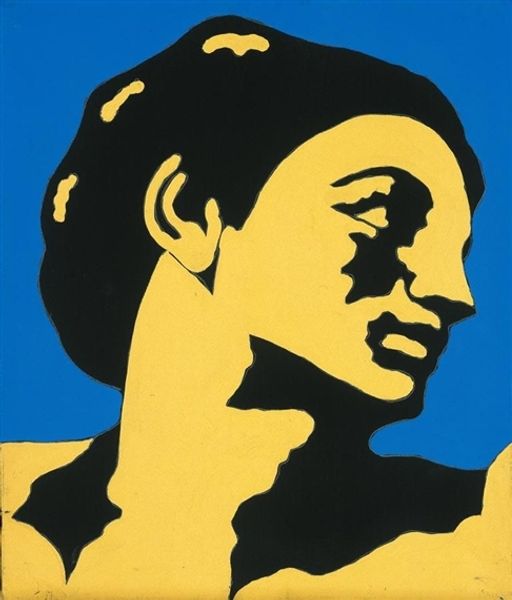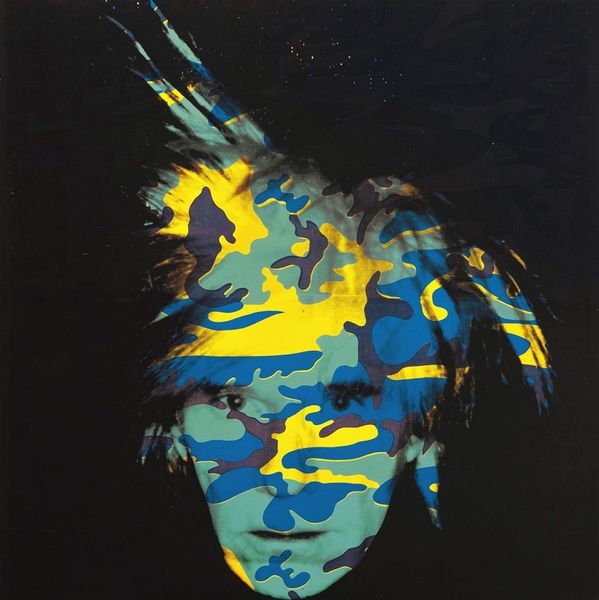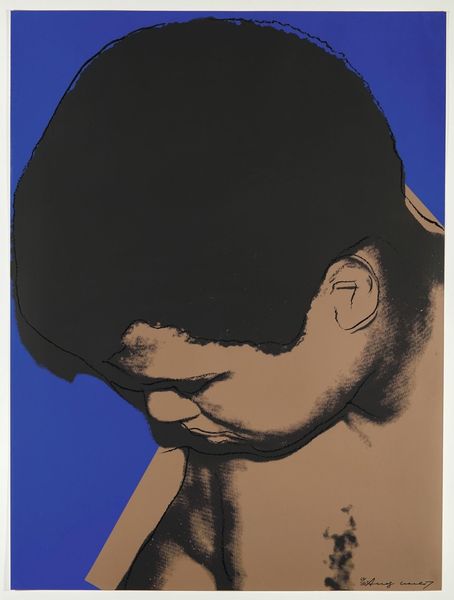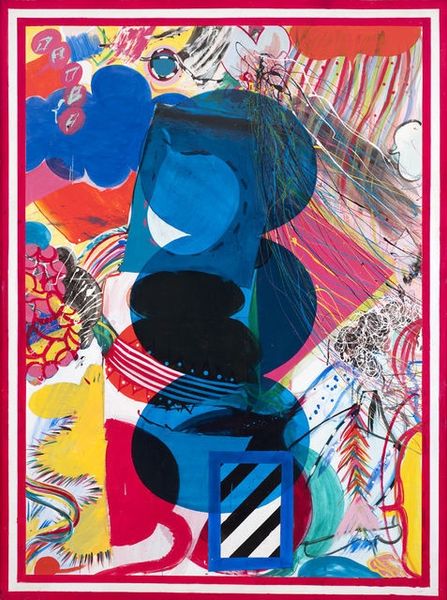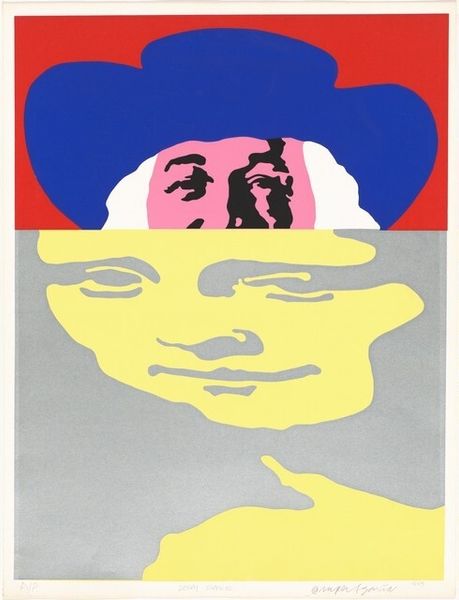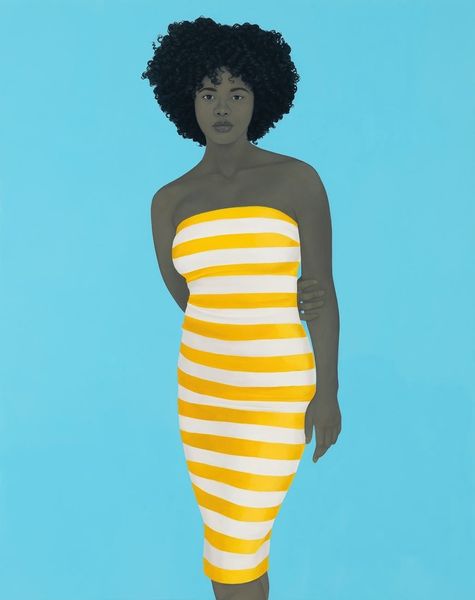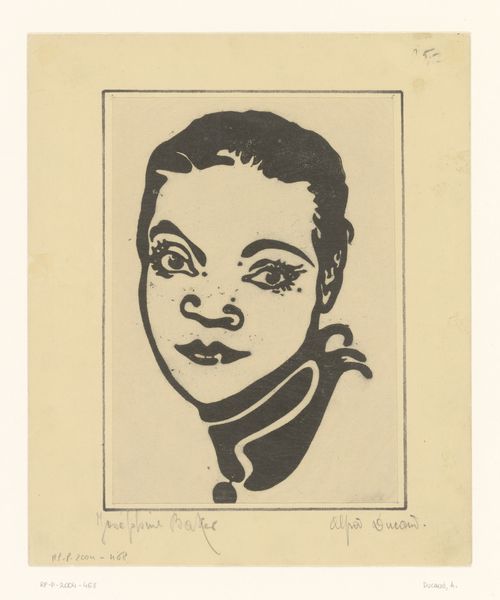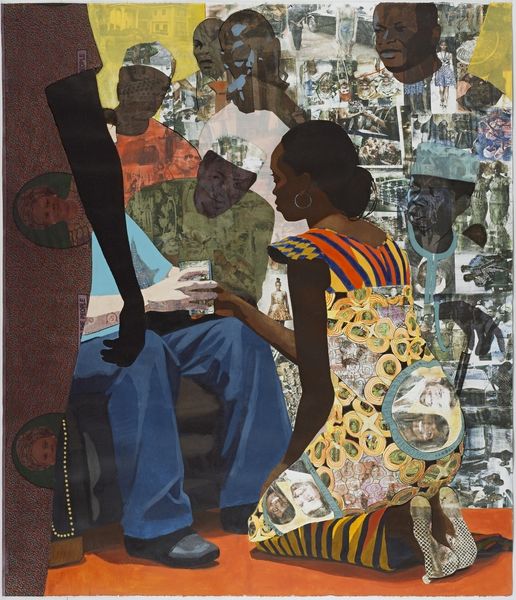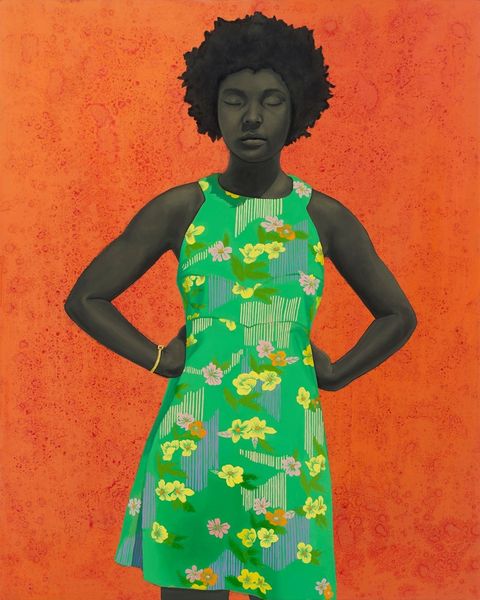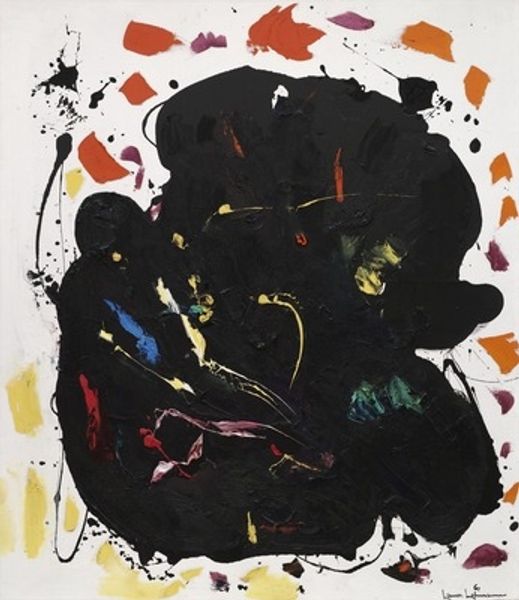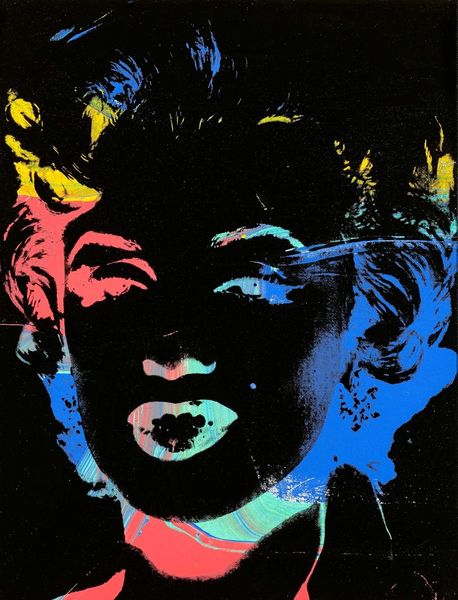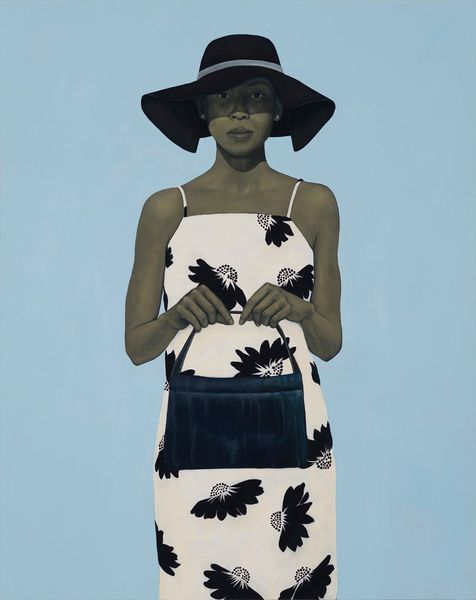
Copyright: Modern Artists: Artvee
Curator: Immediately striking. There's an assertiveness here, a reclaiming of visibility. The composition, especially with the high contrast between figure and ground, really grabs you. Editor: This is Andy Warhol’s "Ladies & Gentlemen" from 1975, a mixed-media work that exists as both a painting and a print. It’s a portrait pulled from a series of works featuring drag queens and trans women, predominantly women of color, who were fixtures of the New York City scene at the time. Curator: Right, and in terms of production, these were screen prints with hand-painted details. You see this tension, which I think is fascinating, between mechanical reproduction and unique, artisanal touches. It highlights the mass-producible image versus the individual artwork. Editor: Precisely. It is crucial to remember the social and political landscape when interpreting this series. The 1970s were marked by a growing visibility of LGBTQ+ communities, but also by intense discrimination and marginalization. How does Warhol position these figures, and what responsibility does he have to them? Curator: Warhol's studio practice often involved outsourcing labor, but that shouldn’t negate his directorial role. The choices he made in terms of color palette – that jarring, almost synthetic pink – the cropping, the overlaying textures...these all contribute to a specific aesthetic. What does it say about representation? Editor: That’s the central question. Does this series celebrate these women, or does it exploit them for the consumption of a primarily white, bourgeois art world? Warhol was undeniably fascinated by fame, and by creating these prints, he offered a degree of visibility, yet the relationship is fraught with issues of power and authenticity. Curator: I think Warhol understood that visibility itself is a material, a commodity to be manufactured and distributed. He understood that the process of making the image – its circulation, its reception – was integral to its meaning. Editor: Yes, and to grapple with the legacy of “Ladies & Gentlemen,” we must confront how these images are seen and used today, acknowledging both their aesthetic value and the complex ethics involved in representing marginalized communities. Curator: Ultimately, the series provokes us to question the boundaries of art, labor, identity, and representation within popular culture, as well as reflect on who dictates these dialogues. Editor: A necessary conversation that should extend beyond these walls, urging a continual and critical reassessment of art's social implications.
Comments
No comments
Be the first to comment and join the conversation on the ultimate creative platform.
